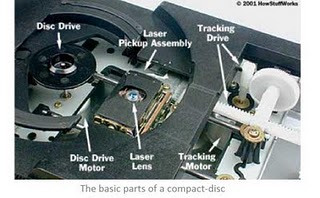Today Removable memory Planet will talk about one of the big items in the world of computers from the 2007 CES show in Las Vegas is the SSD or solid State Drive. This is actually technology that has been around for many years, but only now is it actually set to become something that consumer may actually get to use within the next year.
 |
| Removable memory Planet : Solid State Drive |
Solid state is an electrical term that refers to electronic circuitry that is built entirely out of semiconductors. The term was originally used to define those electronics such as a transistor radio that used semiconductors rather than vacuum tubes in its construction. Most all electronics that we have today are built around semiconductors and chips. In term of a SSD, it refers to the fact that the primary storage medium is through semiconductors rather than a magnetic media such as a hard drive.
Now, you might say that this type of storage already exists in the form of flash memory drives that plug into the USB port. This is partially true as solid state drives and USB flash drives both use the same type of non-valotile memory chips that retain their information even when they have no power. The difference is in the form factor and capacity of the drives. While a flash drive is designed to be external to the computer system, an SSD is designed to reside inside the computer in place of a more traditional hard drive.
So how exactly do they do this ? Well, an SSD on the outside looks almost no different than a traditional hard drive. This design is to allow the SSD drive to put in a notebook or desktop computer in place of a hard drive. To do this, it needs to have the standard dimension as a 1.8, 2.5 or 3.5-inch hard drive. It also will use either the ATA or SATA drive interfaces so that there is a compatible interface.












